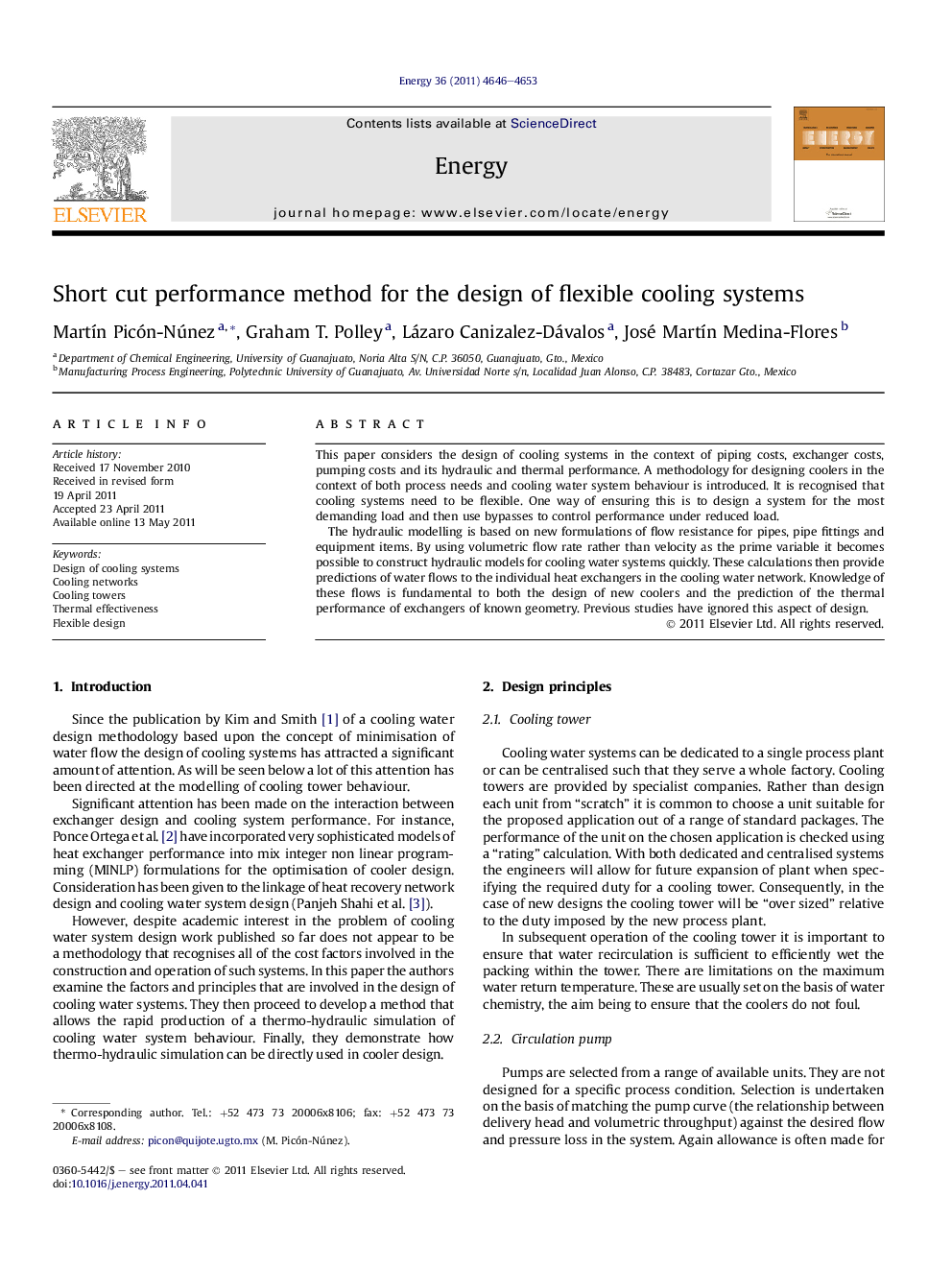| Article ID | Journal | Published Year | Pages | File Type |
|---|---|---|---|---|
| 1734232 | Energy | 2011 | 8 Pages |
This paper considers the design of cooling systems in the context of piping costs, exchanger costs, pumping costs and its hydraulic and thermal performance. A methodology for designing coolers in the context of both process needs and cooling water system behaviour is introduced. It is recognised that cooling systems need to be flexible. One way of ensuring this is to design a system for the most demanding load and then use bypasses to control performance under reduced load.The hydraulic modelling is based on new formulations of flow resistance for pipes, pipe fittings and equipment items. By using volumetric flow rate rather than velocity as the prime variable it becomes possible to construct hydraulic models for cooling water systems quickly. These calculations then provide predictions of water flows to the individual heat exchangers in the cooling water network. Knowledge of these flows is fundamental to both the design of new coolers and the prediction of the thermal performance of exchangers of known geometry. Previous studies have ignored this aspect of design.
► Design of cooling systems in the context of piping, exchanger, pumping costs and its hydraulic and thermal performance.► A hydraulic model based on formulations of flow resistance for pipes, pipe fittings and equipment items is developed.► Volumetric flow rate is used rather than velocity as the prime variable to construct the hydraulic model.► The design of coolers in the context of both process needs and cooling water system behavior is introduced.
